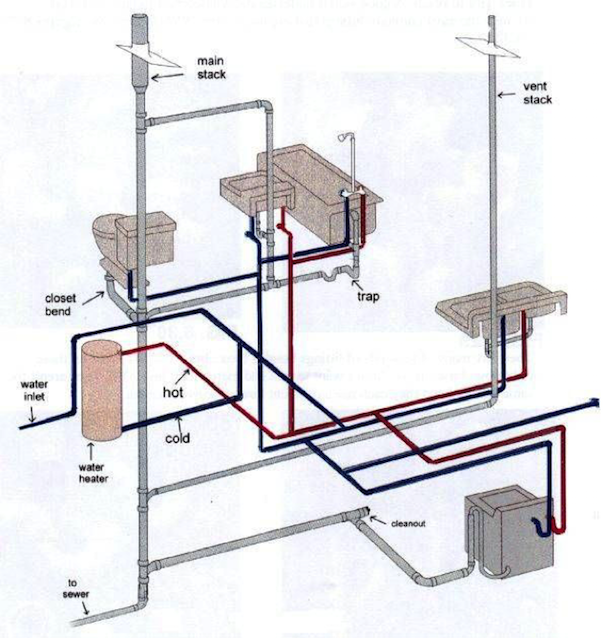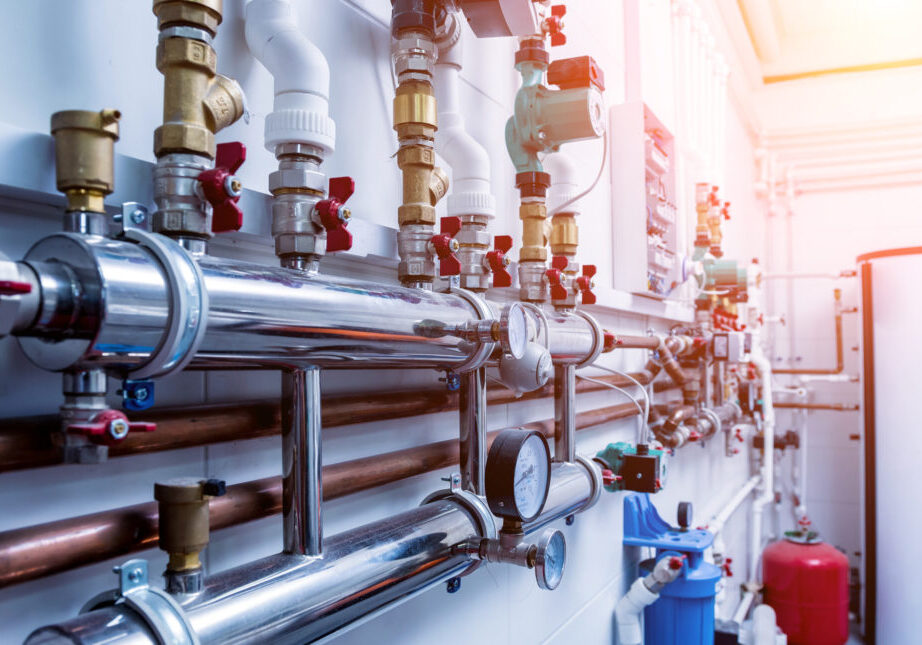What You Need to Know About Your House's Plumbing System Anatomy
What You Need to Know About Your House's Plumbing System Anatomy
Blog Article
We've discovered this great article pertaining to Plumbing Installation 101: All You Need to Know listed below on the net and believe it made sense to quickly share it with you on this page.

Recognizing how your home's pipes system works is necessary for every home owner. From providing tidy water for drinking, food preparation, and bathing to securely eliminating wastewater, a properly maintained plumbing system is vital for your family's health and wellness and comfort. In this detailed guide, we'll check out the intricate network that comprises your home's pipes and offer pointers on maintenance, upgrades, and managing common problems.
Intro
Your home's plumbing system is greater than just a network of pipes; it's an intricate system that ensures you have accessibility to tidy water and efficient wastewater elimination. Recognizing its elements and just how they work together can assist you protect against costly repair services and make certain whatever runs smoothly.
Fundamental Elements of a Pipes System
Pipelines and Tubes
At the heart of your plumbing system are the pipes and tubing that carry water throughout your home. These can be constructed from various materials such as copper, PVC, or PEX, each with its advantages in terms of sturdiness and cost-effectiveness.
Components: Sinks, Toilets, Showers, etc.
Fixtures like sinks, toilets, showers, and tubs are where water is utilized in your home. Recognizing just how these components attach to the pipes system aids in detecting troubles and intending upgrades.
Shutoffs and Shut-off Points
Valves control the flow of water in your plumbing system. Shut-off valves are essential during emergencies or when you need to make repairs, allowing you to isolate parts of the system without disrupting water circulation to the whole residence.
Water System
Key Water Line
The primary water line links your home to the community supply of water or a private well. It's where water enters your home and is distributed to various components.
Water Meter and Stress Regulator
The water meter steps your water usage, while a stress regulatory authority makes sure that water streams at a risk-free pressure throughout your home's pipes system, protecting against damages to pipes and fixtures.
Cold Water vs. Hot Water Lines
Recognizing the difference between cold water lines, which supply water straight from the major, and hot water lines, which carry warmed water from the hot water heater, assists in troubleshooting and planning for upgrades.
Drain System
Drain Pipes and Traps
Drain pipelines bring wastewater away from sinks, showers, and toilets to the sewage system or septic system. Catches stop drain gases from entering your home and also catch debris that might cause obstructions.
Ventilation Pipes
Air flow pipes allow air right into the drain system, preventing suction that can slow down drainage and trigger traps to vacant. Appropriate ventilation is necessary for preserving the integrity of your pipes system.
Significance of Correct Drain
Ensuring appropriate water drainage stops backups and water damages. Frequently cleaning drains pipes and maintaining catches can prevent pricey repairs and expand the life of your plumbing system.
Water Furnace
Kinds Of Hot Water Heater
Water heaters can be tankless or typical tank-style. Tankless heating units warmth water on demand, while containers store warmed water for immediate usage.
Updating Your Plumbing System
Factors for Upgrading
Updating to water-efficient components or replacing old pipelines can improve water high quality, reduce water expenses, and raise the value of your home.
Modern Pipes Technologies and Their Benefits
Check out modern technologies like smart leakage detectors, water-saving toilets, and energy-efficient water heaters that can conserve money and decrease ecological impact.
Expense Factors To Consider and ROI
Calculate the in advance prices versus long-term cost savings when thinking about plumbing upgrades. Lots of upgrades spend for themselves through decreased energy bills and less repair work.
Exactly How Water Heaters Attach to the Plumbing System
Comprehending just how hot water heater connect to both the cold water supply and hot water circulation lines aids in diagnosing problems like inadequate warm water or leakages.
Maintenance Tips for Water Heaters
Frequently purging your water heater to eliminate debris, checking the temperature level setups, and inspecting for leaks can prolong its life expectancy and boost power efficiency.
Common Plumbing Problems
Leakages and Their Reasons
Leakages can take place due to aging pipes, loose fittings, or high water pressure. Attending to leakages without delay protects against water damages and mold growth.
Clogs and Blockages
Clogs in drains pipes and commodes are commonly triggered by flushing non-flushable items or a buildup of oil and hair. Making use of drainpipe screens and being mindful of what goes down your drains pipes can stop blockages.
Indications of Plumbing Troubles to Expect
Low water pressure, slow-moving drains pipes, foul odors, or uncommonly high water bills are signs of possible pipes problems that should be resolved immediately.
Plumbing Maintenance Tips
Normal Assessments and Checks
Schedule yearly pipes evaluations to capture problems early. Look for signs of leakages, deterioration, or mineral build-up in faucets and showerheads.
DIY Maintenance Tasks
Straightforward jobs like cleaning tap aerators, checking for toilet leakages using color tablets, or insulating revealed pipes in cool climates can prevent significant plumbing concerns.
When to Call an Expert Plumber
Know when a plumbing issue needs professional experience. Attempting intricate repair services without proper understanding can lead to even more damage and greater repair service costs.
Tips for Minimizing Water Usage
Basic habits like fixing leakages promptly, taking much shorter showers, and running complete tons of washing and recipes can conserve water and reduced your energy expenses.
Eco-Friendly Pipes Options
Take into consideration sustainable pipes materials like bamboo for floor covering, which is durable and environment-friendly, or recycled glass for countertops.
Emergency situation Preparedness
Actions to Take During a Pipes Emergency
Know where your shut-off shutoffs are located and how to shut off the water supply in case of a ruptured pipeline or major leakage.
Importance of Having Emergency Calls Handy
Maintain contact details for local plumbing professionals or emergency solutions readily offered for quick action throughout a plumbing situation.
Environmental Influence and Conservation
Water-Saving Components and Devices
Setting up low-flow taps, showerheads, and toilets can substantially reduce water use without giving up performance.
DIY Emergency Situation Fixes (When Suitable).
Short-lived fixes like utilizing duct tape to spot a dripping pipeline or placing a pail under a dripping tap can decrease damage up until a specialist plumber shows up.
Verdict.
Recognizing the makeup of your home's plumbing system empowers you to maintain it efficiently, saving time and money on repair services. By complying with normal upkeep regimens and remaining educated concerning modern-day pipes modern technologies, you can guarantee your pipes system runs successfully for several years ahead.
The Anatomy of Your Home s Plumbing System
Understanding the anatomy of your home s plumbing system is essential for any homeowner. It not only helps in identifying potential issues but also facilitates effective communication with professionals when repairs or upgrades are needed. Your home s plumbing system is more than just pipes and faucets; it s a complex network that ensures the efficient and hygienic flow of water in and out of your house. In this blog, we ll dissect the crucial components of your home s plumbing system. For those in Antelope Valley, Brock Plumbing is your trusted partner for all your plumbing needs, ensuring your system functions smoothly and efficiently.
Water Supply System
Main Water Line: This is where your home s plumbing system begins. The main water line connects your home to the public water supply or a private well. Pipes and Shut-off Valves: Pipes distribute water throughout your home. Shut-off valves are crucial for controlling the flow of water and making repairs without shutting off the entire system. Drainage System
Drain Pipes: These pipes carry waste and water away from sinks, toilets, and showers. Vents: Vents allow sewer gases to escape and help maintain proper pressure in the drainage pipes, ensuring efficient flow of wastewater. Traps: Every fixture has a trap, a U-shaped pipe that holds water and prevents sewer gases from entering your home. The most common is the P-trap under sinks. Fixtures and Appliances
Fixtures and appliances are the most interacted with parts of your plumbing system. They include sinks, toilets, showers, dishwashers, and washing machines. Each fixture and appliance has its own supply and drainage connection, ensuring they receive clean water and can dispose of wastewater effectively.
Water Heating System
Your water heater is a crucial component, providing hot water to various fixtures and appliances in your home. It can be tank-based or tankless, with each type having its own set of advantages and maintenance requirements. Regular maintenance is essential to ensure efficient operation and extend the lifespan of the unit.
Sump Pump
In areas prone to flooding or with high water tables, a sump pump is an essential part of the plumbing system. It s installed in the lowest part of your basement or crawlspace and pumps out water that accumulates, preventing flooding and protecting your home from water damage.
Septic System
Homes that are not connected to a municipal sewer system have a septic system and an underground wastewater treatment structure. Understanding how to maintain your septic system is crucial to prevent backups, odors, and early system failure.
Conclusion
Your home s plumbing system is a complex and essential network, ensuring the efficient and hygienic flow of water in and out of your property. Understanding its key components helps in maintaining it properly and identifying issues before they escalate into major problems. For residents in Antelope Valley, Brock Plumbing is dedicated to providing top-notch services, ensuring that every part of your plumbing system is in perfect working order. Trust our team of professionals to handle all your plumbing needs, ensuring your home remains comfortable, safe, and well-maintained.
https://brockplumbinganddrains.com/blog/the-anatomy-of-your-homes-plumbing-system/

Hopefully you liked our part on Understanding Your Home's Plumbing Anatomy. Thanks a ton for taking the time to read our blog post. Feel free to take the time to distribute this blog post if you enjoyed it. Thanks so much for your time spent reading it.
Set Up An Appointment Report this page